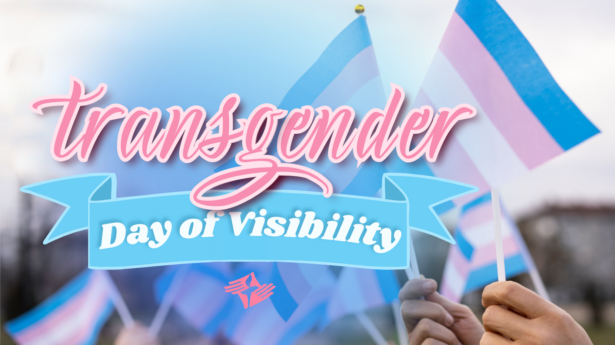The Unitarian Universalist Service Committee advances human rights through grassroots collaborations.
The Struggle to End Title 42 is Far From Over

By on March 9, 2022
Update March 14, 2022: Help us take action to save asylum and end Title 42 in partnership with UUs for Social Justice at UUSC’s Initiatives page.
Last week, many of our heads were left spinning when—within just a few hours of each other—two federal courts issued wildly divergent opinions on the future of the Title 42 policy. To unpack what these decisions mean, let’s refresh our memories on what we know about the policy so far:
What is Title 42, again?
It’s an executive branch program that both the Trump and Biden administrations have used to rapidly expel asylum-seekers at the border without offering them a chance to seek protection.
The policy has been defended under the pretext of responding to the COVID-19 pandemic, but in fact it has no scientific basis and is widely opposed by public health experts. As the two administrations have carried out nearly 2 million expulsions under Title 42 authority, even while other public health and mitigation strategies were being rolled back, it has only become clearer that the true purpose of the policy is to circumvent U.S. asylum laws and deport migrants more quickly. As a group of public health experts succinctly put it, the policy is really: “xenophobia masquerading as public health.”
In the wake of Friday, March 4’s court rulings, is the policy now over?
Unfortunately, no. The need remains as urgent as ever to call on the administration to permanently end this unjust and baseless policy. Neither court ruling goes into effect immediately. Moreover, neither would end the policy in its entirety, even after it goes into effect, unless the administration takes action on its own to completely halt Title 42 expulsions and restore access to asylum.
So what did the court cases do?
In the first case, the D.C. court of appeals delivered a mixed decision in a long-pending case brought by the ACLU (and other advocates) on behalf of asylum-seeking families. On the one hand, the three-judge panel ruled that the government can continue expelling families without a chance to seek asylum (a form of legal status under U.S. immigration law that allows people to stay permanently in the country and have the opportunity to look for work). On the other hand, the court blocked the government from sending these families to places where they are likely to face persecution or torture.
It is unclear as of this writing how the government will choose to interpret this latter requirement. At this stage of the proceedings, the court was largely silent on how the administration should implement their obligation to avoid expelling people to torture and persecution. To its disgrace, the court also went out of its way to permit the government to 1.) continue categorically denying access to asylum during the pandemic; 2.) expel people to third countries in which they cannot prove they face the same risks (but where such risks may be equally grave nonetheless); and 3.) detain people who cannot be immediately expelled.
The court was also silent on whether the government needs to proactively ask people about their fears of persecution and torture, or merely watch and see if they volunteer this information prior to being expelled (a procedure known as the “shout test” that legal experts do not consider sufficient to comply with baseline refugee protections under international law.)
In sum, therefore, the court seems to have left a dangerous amount of leeway for the U.S. government to continue to sidestep its humanitarian obligations to people seeking refuge.
Furthermore, this decision will only apply to asylum-seeking families traveling with minor children, due to the way the class of plaintiffs was defined in the lawsuit. In theory, therefore, all other asylum-seekers, including adults traveling alone, or families without children under 18, could still be expelled under Title 42 in the same way as before—even if they showed that they faced likely persecution—after this ruling takes effect.
So what about the second case?
The second court decision, which came later that same day, was issued by a district court judge in Texas and reached a radically different conclusion. Judge Mark Pittman was hearing a lawsuit brought by right-wing state officials arguing that the Biden administration had no right to exempt unaccompanied minors from expulsion under Title 42 because such an exemption was “arbitrary and capricious.” Judge Pittman ruled in the state officials’ favor, then put his own decision on hold for seven days, leaving time for an appeal.
So what should the government do?
If Judge Pittman’s ruling goes into effect without being further delayed or overturned by a higher court, then the Biden administration has only two clear options: Either they can comply with the court’s order and start ejecting the refugee children in their custody alone into perilous parts of the globe without a baseline screening for their asylum needs…or they can cut the Gordian knot of litigation—much of which turns on the question of whether it is legal to exempt children exclusively from the broader policy—by simply ending Title 42 expulsion in all forms.
Unsurprisingly, we urge them to take the latter step. This is what we have been calling for from the moment Title 42 went into effect. From March 2020 to the present, this policy has never been justified, lawful, or morally sound. As we rapidly approach the two-year mark since the policy was created, the arguments in favor of ending it have only gained force. If the administration doesn’t end it now, the result would be unaccompanied children too now being expelled to imminent danger. So today, we repeat our demand with as much urgency as ever: We call on Biden to end the Title 42 policy once and for all and fully restore asylum.
Image Credit: iStock-nito100

